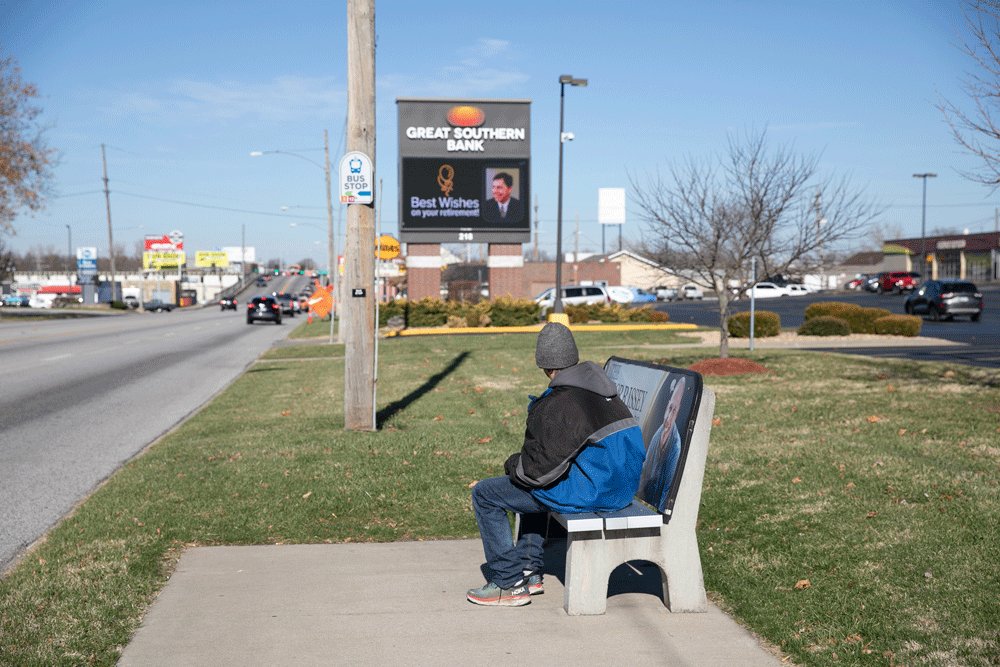YOUR BUSINESS AUTHORITY
Springfield, MO
YOUR BUSINESS AUTHORITY
Springfield, MO

A partnership between the city and the Missouri Highways and Transportation Commission will add new sidewalks along Glenstone Avenue and Kansas Expressway if approved by Springfield City Council at its meeting Jan. 10.
Council heard the first reading of two measures for municipal and cost apportionment agreements to share costs associated with the projects, which have a total estimate cost of $12.7 million.
The Glenstone Avenue project would add sidewalks from Valley Water Mill Road in the north to James River Freeway in the south. Glenstone Avenue is the business route of U.S. Highway 65.
The project cost for the Glenstone sidewalk improvements is estimated by the commission at $7.5 million, with the city’s share to be $394,293. The city would pay 80% of that amount with Surface Transportation Block Grant funds, with the remaining 20%, or $78,895, coming from the 1/8-cent transportation sales tax, the 1/4-cent capital improvement sales tax and sidewalk buyout funds already budgeted.
New sidewalks would be added along Kansas Expressway, which is Missouri Route 13, from Interstate 44 in the north to James River Freeway in the south. The project is estimated to cost $5.2 million, with the city’s responsibility at $748,512. Again, 80% of the city’s share would be paid with STBG funds, and the remaining 20%, $149,703, would also be paid by sales taxes and sidewalk funds.
If approved, the Glenstone project will begin in spring 2022, and the Kansas Expressway project will start in 2023.
Dawne Gardner, transportation planner and Americans with Disabilities Act coordinator for the city’s Department of Public Works, explained that the purpose of the projects is to provide better accessibility for pedestrians along the two roadways, which are state-controlled.
She said many of the existing sidewalks are in fair or even good condition.
“That doesn’t necessarily mean they meet all the requirements for the accessibility guidelines published by the Department of Justice,” she said.
The proposed projects would bring the existing sidewalks up to compliance, Gardner said. ADA compliance requires a minimum sidewalk width of 4 feet, with a 5-by-5-foot passing space every 200 feet.
“In the city of Springfield, we’ve actually adopted 5 feet as our standard, so we put in 5-foot sidewalks wherever we can,” she said. “Our philosophy is if we can do better, then why don’t we, because we’re talking accessibility.”
She said ADA-compliant sidewalks are smooth and not broken up, and vertical deflection – which is to say unevenness – can’t exceed half an inch. Additionally, a sidewalk can’t exceed a 2% cross slope and be compliant.
“If you’re traveling and the sidewalk starts sloping toward the roadway, 2% doesn’t sound like a lot, but if you’re trying to keep a manual wheelchair on the sidewalk, it’s hard to keep from going into a traffic lane,” she said.
Gardner said the MHTC reached out to the city for the project. The commission would like to fix sidewalks that are in place and fill in the gaps where sidewalks are missing.
Gardner said ADA compliance has to do with more than just wheelchair access. People with visual disabilities rely on accessible sidewalks, too, she said, but so do people who are pushing strollers.
“Sidewalks provide a more livable quality of place community,” she said.
While the Glenstone and Kansas Expressway projects are for state-maintained roadways, the city has dedicated funding to maintaining other sidewalks and pedestrian throughways.
New sidewalk funding of $1.4 million has been budgeted over five years starting this year, Gardner said, with an additional $1.6 million for use on trails and sidewalk construction or repair. The total for the walkability program is $3 million, $1.4 million of which must be for new sidewalks, Gardner said.
“The sidewalk plan that we are working on has currently $30 million of identified needs throughout the city,” Gardner said. “This is just filling in gaps and does not include maintenance needed for existing sidewalk.”
The list is not all inclusive, Gardner said.
“It is just some identified priorities based on gaps in routes to bus stops, high pedestrian corridors and requests for sidewalk from the public,” she said.
The city is currently working on identifying gaps from the list that can be easily constructed, meaning there is sufficient right of way, with no large obstructions like utilities that need to be moved or large ditches that require major work.
Additionally, a sidewalk/ramp survey completed by the city in 2018 found $30 million in needs for existing city sidewalks to be brought into full ADA compliance. The city has dedicated $1.7 million each year with existing funds to put toward the ADA transition plan, Gardner said.
Guest columnist Donnie Brawner says many entrepreneurs stray from their original business ventures, which is often a recipe for success.